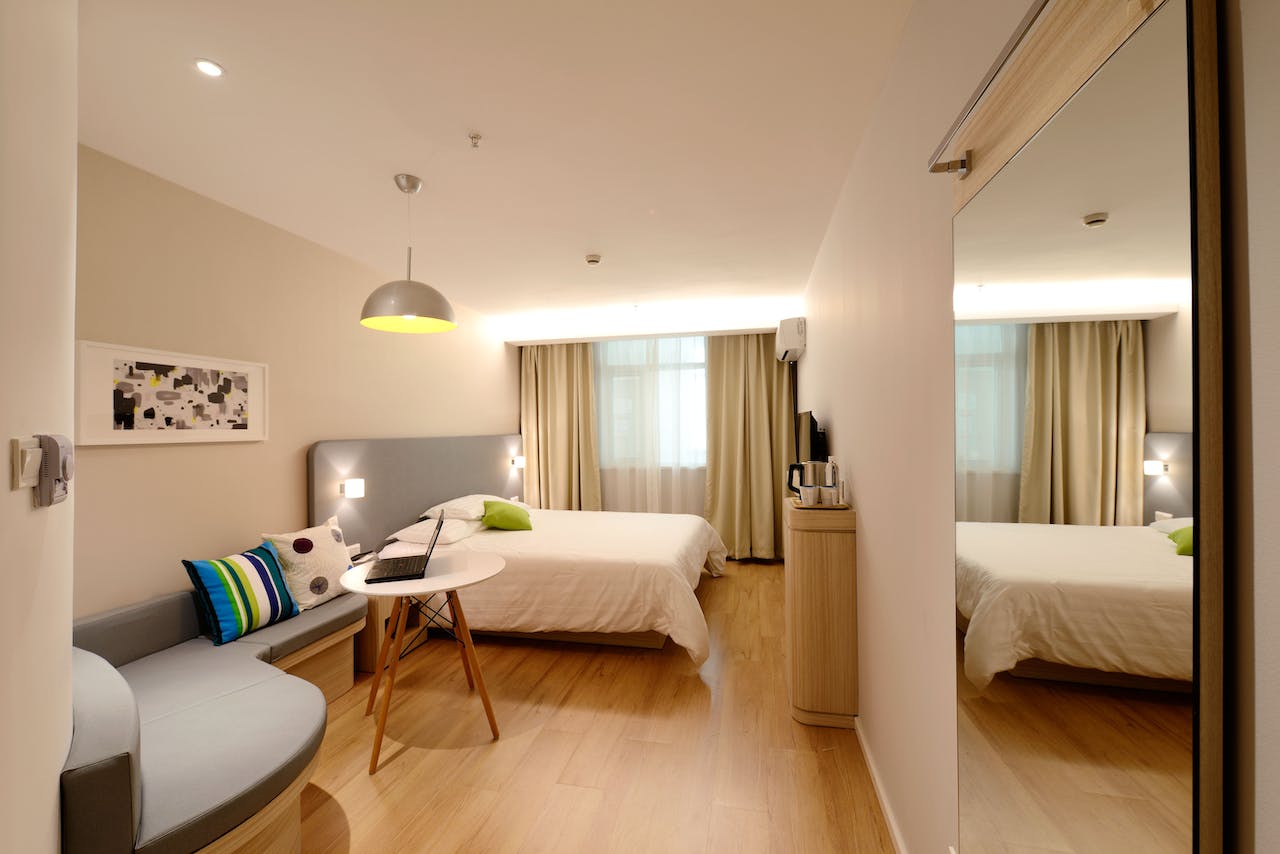
A few key changes can turn your bedroom into a sumptuous sleep sanctuary
A serene and peaceful bedroom can significantly influence your quality of sleep and overall well-being. After a long day, your bedroom should be a sanctuary where you can relax, unwind, and rejuvenate.
Whether you live in one of the new homes in Darlington or an older property in the countryside, it’s important to take the necessary steps to prepare your bedroom for sleep with relaxing décor options.
With that in mind, here are 12 simple yet effective tips for a more relaxing bedroom in your home.
Soft colour palette
Stick to muted, soft hues that evoke feelings of tranquillity. Consider shades of blue, lavender, soft greens, or even gentle greys and whites. These colours have been shown to have a calming effect and can set a relaxed tone for the room.
Declutter
A cluttered space can lead to a cluttered mind. Remove unnecessary items, use storage solutions like under-bed boxes or floating shelves, and maintain a minimalist approach where possible. Keeping things clean and tidy will help you relax without creating a mental to-do list to add to your worries.
Flow and layout
The way furniture and decor are arranged plays a pivotal role in the room’s energy and flow. Feng Shui, the ancient Chinese art of placement, emphasizes the importance of positioning in creating harmonious spaces.
Comfortable bedding
Invest in good quality, breathable bedding. Natural fabrics like cotton or linen can be both luxurious and comfortable. Choose soft sheets, plush pillows, and a cosy comforter or duvet.
Layered lighting
Avoid harsh overhead lights. Instead, opt for layered lighting solutions – think soft bedside lamps, fairy lights, or even candles (ensure they’re used safely) to create a warm, gentle glow.
Natural elements
Incorporate plants or flowers. Not only do they add a touch of nature, but certain plants like lavender or aloe vera can also have calming properties. Wooden elements, be it furniture or decor, can add warmth and a grounding feel.
Limit electronics
The blue light from devices like phones or laptops can disturb your sleep. Designate a charging station outside of the bedroom or invest in an old-fashioned alarm clock instead of using your phone.
Minimalism
In an age where ‘more is more’ often becomes the norm, adopting a minimalist approach in the bedroom can be a breath of fresh air. Minimalism doesn’t necessarily mean devoid of character; it’s about focusing on the essentials. This design philosophy champions quality over quantity.
Aromatherapy
Scents can play a significant role in relaxation. Consider using essential oil diffusers or candles with scents like lavender, chamomile, or sandalwood, known for their calming properties.
Tactile comfort
Add textures that are pleasant to touch. This could be a plush rug, a soft throw blanket, or velvety cushions. These elements increase the comfort level of your bedroom.
Keep it personal
Personal touches can make the bedroom feel uniquely yours. Whether it’s family photos, personal mementos, or artwork that resonates with you, these elements can give a sense of comfort and belonging.
White noise or soothing sounds
Some people find it relaxing to have background sounds like a fan, a white noise machine, or even apps that play calming nature sounds. Find what works for you and incorporate it into your nightly routine.
Curating a relaxing bedroom is all about personal comfort. While these tips serve as a foundation, it’s essential to adapt them to your preferences. Your bedroom should be an oasis, reflecting not just design trends but also your personal needs for relaxation and rejuvenation.